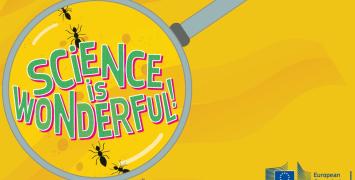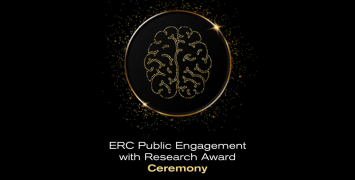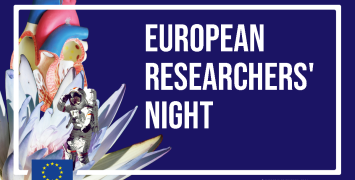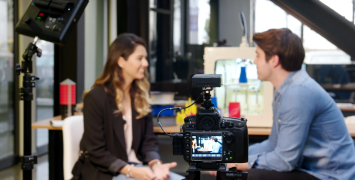The dancing particles
ERC grantee Konstantinos Nikolopoulos at the University of Birmingham recently won the first ERC Public Engagement with Research Award in the category of public outreach. His ExclusiveHiggs project looks at the origin of mass by exploring the interactions of the elementary matter particles with the Higgs boson. In this interview, he describes his efforts to make the public understand this field of physics through art and dance.
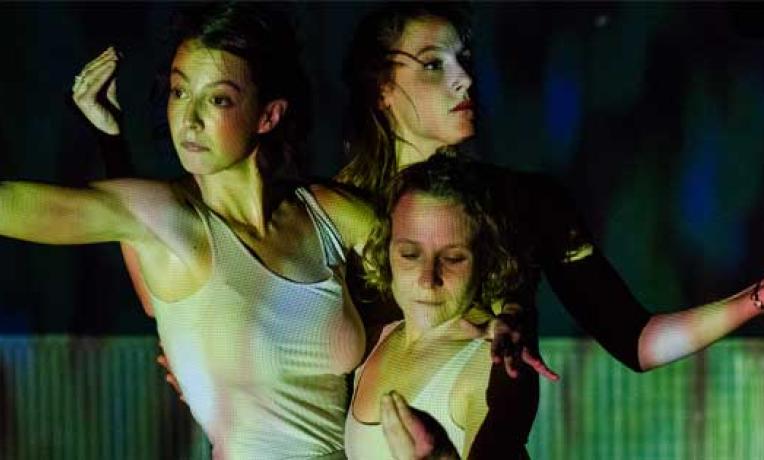
Watching this video you are accepting Youtube cookies policy
As part of your project, you decided to engage the public with particle physics through art. How did you come to this idea and what prompted you to do so?
For a long time, I have been involved in the traditional routes of public engagement like talks and demonstrations in schools, science festivals, and even a few blog posts and social media. At some point, I realised that art is universally able to engage people and it occurred to me that using art as a vehicle could potentially break the traditional notions of what it means to be a scientist. At the same time, I was very lucky that I met the artist Ian Andrews and the dancer-choreographer Mairi Pardalaki. They were both very interested in my work, and it was through many discussions and exchanges that we started building this collaborative work none of us had foreseen.
What exactly did your public engagement activities consist of?
The underpinning idea was to engage the public through art in activities that educate and potentially inspire them about particle physics. There were three pillars.
First was the engagement with artists per se. Through this collaboration with Ian Andrews and Mairi Pardalaki they studied physics, thought about these concepts and we would discuss them. But it did not stop there. While developing their personal practice around these topics, they were also discussing it with other artists. In a way, they became ambassadors of particle physics.
The second pillar was to engage with the public. Our art exhibitions and dance performances would raise the public’s interest from the artistic perspective, but also make them wonder what it all meant. It was a unique opportunity to have a discussion beyond the art and about the science.
Finally, the third pillar was engaging with students. At some point, we realised the artistic process we followed could be replicated at schools. We developed workshops on explaining scientific concepts through artistic projects and worked with more than 200 students. Our big hope is that, one day, science and art teachers will organise these kind of activities together at their schools.
The interaction with the audience during the events deeply affected me
Could you describe a bit more the exhibits and dance performances that you developed?
The artist Ian Andrews developed a body of work under the title ‘The sketchbook and the collider’. While a sketchbook is a basic tool for an artist, where all the ideas come together for the artist to draft, draw, rip and throw away; the collider is one of the basic tools of a particle physicist, where particles collide and the scientist tries to understand what comes out of the collision. Ian presented this basic theme in several exhibitions, having an excellent turnout of more than 2 000 people.
At the same time, with the dancer-choreographer Mairi Pardalaki we developed the dance performance ‘The neutrino passoire’. Our collaboration was inspired and started from a discussion about the 2015 Nobel Prize in Physics, proving that the neutrinos have mass but travel without really interacting very much. The title came from the realisation that, while we tend to think of our body as something closed, there are particles going through us all the time. The performance was developed over the years and presented at numerous festivals in the UK and France.
What benefits did public engagement efforts bring to you and your team?
It was a very interesting experience for me at many different levels. First, I have always been interested in arts from the aesthetic point of view, but the artistic creative process was a mystery to me. Through this, I came to realise there are many commonalities between the creative process in arts and in scientific research: artists do literature review as scientists do, and except for a few eureka moments, there is a lot of structure and hard work involved in their art.
Secondly, the interaction with the audience during the events deeply affected me. We were told: ‘I have never seen something like this before’ on several occasions, which was not only a testament to the creativity of the artist but also to the success of the collaboration.
Scientists have to come out of their labs and try to inspire the new generations
Would you recommend to other ERC grantees to invest more time in public engagement?
I would definitely recommend it to every scientist. Public engagement clearly requires an effort, but despite the physical fatigue, I always found myself more enthusiastic about my own research after public engagement events.
Besides the personal reward, it is also important to keep in mind that blue-sky scientific research – like ERC projects – is usually funded by taxpayers’ money and is intellectual property of humanity as a whole. Therefore, it is our duty to involve the citizens and give them the opportunity to be part of it.
When it comes to publicly funded research, we must explain why and how we use this money and make the case why it is important to continue funding it. This is particularly important in the framework of current discussions about the science budget and Horizon Europe, but even more so at this specific moment in time when retrogressive ideas seem to gain ground in our societies. Scientists have to come out of their labs and try to inspire the new generations.
How can we ensure that scientists engage more in this type of activity in the future?
Public engagement requires a lot of effort, time and resources. Most of my colleagues (myself included) are doing public engagement activities on top of our daily research and teaching duties and not every scientist has the privilege of the extra time to do that.
To help more scientists engage with the public, research institutions and funding agencies should acknowledge public engagement activities as an integral part of our work so it can be embedded in our workload. Some steps have already been taken, but we are quite far from this becoming a reality.
BIO
Kostas Nikolopoulos is Professor of Physics at the University of Birmingham. He is a member of the ATLAS collaboration at the CERN Large Hadron Collider, where he led the ATLAS H→ZZ group during the Higgs boson discovery. Currently he focuses on understanding the origin of mass through measurements and searches in the Higgs sector, and direct searches for dark matter particles. He actively works to inspire the next generations of scientists and engage citizens with scientific research.


